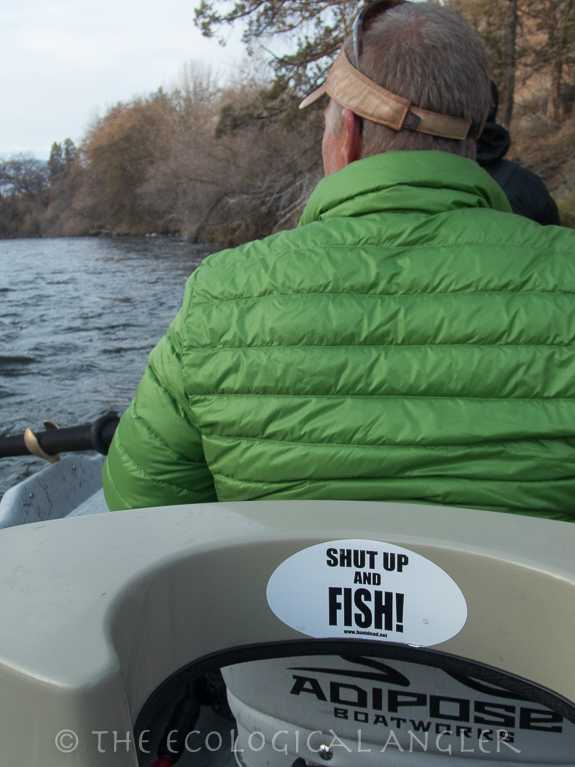The Ecological Angler
ecoangler.com
Fly Fishing Klamath River Steelhead
The headwaters of the Klamath River, unlike most other watersheds in the Pacific Northwest, originate in flat open valleys before descending into a steep river canyon that intercepts inputs from multiple groundwater inflows in the upper basin and then collects the major tribs of the Shasta, Scott, Salmon, and Trinity Rivers before emptying into the Pacific Ocean.
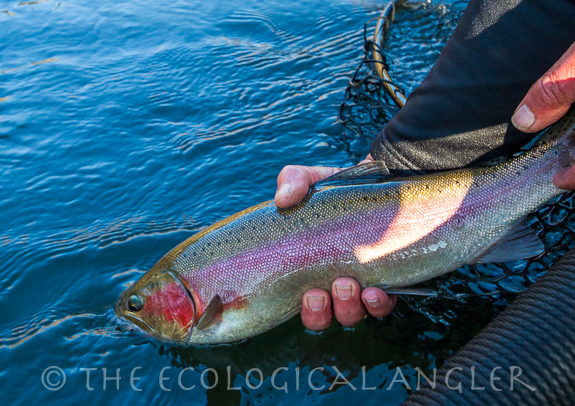
The Mid and Upper Klamath River sub-basins drain approximately 1,440 square miles. The Mid Klamath is located in Siskiyou County, between the confluence of the Klamath and Trinity Rivers and upstream of Portuguese Creek. The Upper Klamath basin extends into Oregon, but the current extent of anadromy is to Iron Gate Dam in California. For the fly angler targeting steelhead in the Klamath River the "Mid Klamath" upstream to Iron Gate Dam would be the prime waters to fish.
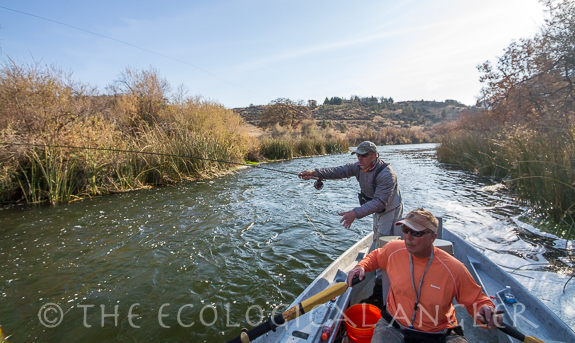
Steelhead Half Pounders
A somewhat unique steelhead steelhead life history plays out in two Pacific Coast rivers - the Klamath River and Rogue River. Commonly called half-pounders, these immature steelhead return to freshwater after roughly four months in saltwater. The smaller steelhead that migrate back after one season go on to spend the winter in freshwater in search of food. Their migration contrasts with most other steelhead who spend one or two years in the ocean before returning.
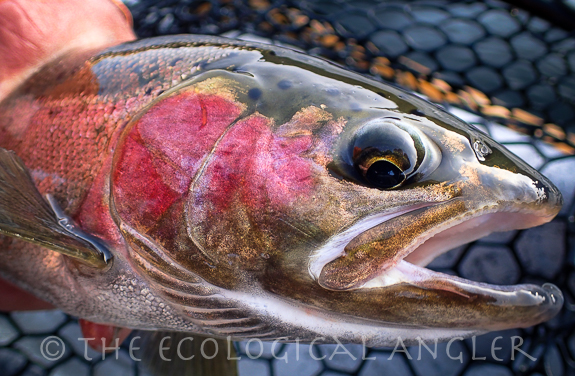
So why do some immature steelhead go on a migration of 4 months in salt while others don't? It turns out a steelhead’s size at the end of its freshwater rearing plays a big factor in whether to undergo the half-pounder migration. Based on research, smaller than average steelhead smolts were more likely to undergo the half-pounder migration compared to those that were not. The half-pounder life history may be a strategy to increase the chance of survival by over-wintering in freshwater habitats instead of the ocean (i.e., not as many hungry predators to avoid).
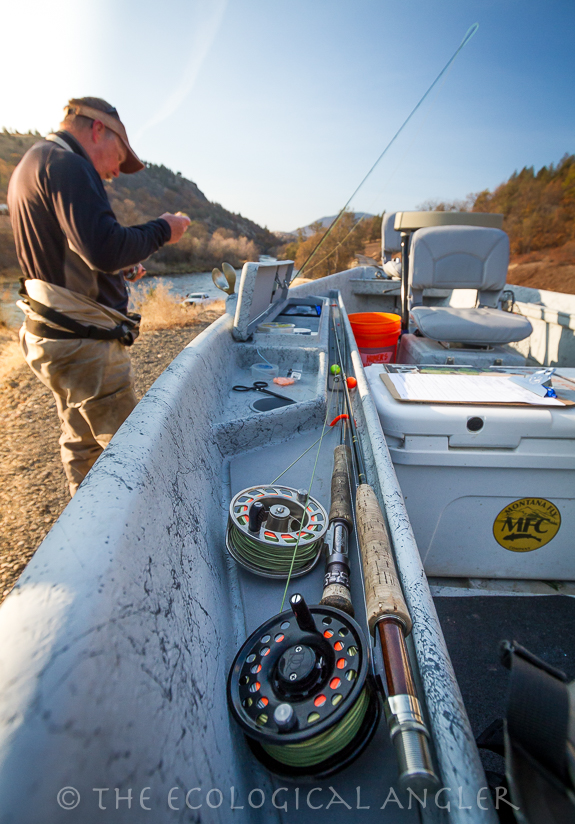
When to Steelhead on the Klamath?
I found Jim Freeman's California Steelhead to offer some pretty sage advice on this question:
I have often said that only a lunatic would try to predict when a run of steelheads or any anadromous fish would occur in any particular section of a Pacific Coast stream. With that disclaimer out of the way Jim goes on to say, My own timetable would be Blue Creek to Johnson's, September 1; Weitchpec, September 7; Orleans to Somes Bar, September 20; Happy Camp, October 1; Happy Camp to Iron Gate Dam, the whole month of October.
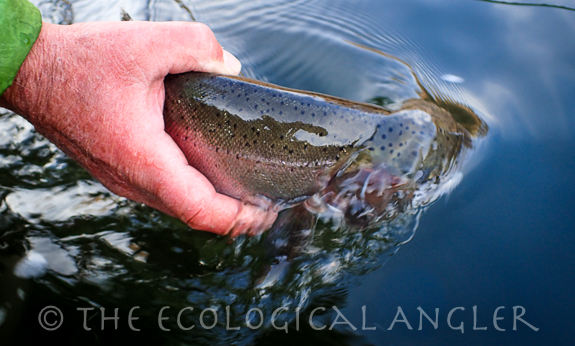
I also think that the steelheads begin to slow their pell-mell movements up the Klamath as they reach the area above Happy Camp. Here they start to slow down to follow the king salmon runs beginning to move onto the spawning beds; they aslo start to hand around the mouths of feeder streams. As soon as a really good rain hits the Klamath drainage, these steelheads will move out of the main river. Then new runs will move into holding pockets in the upper river.
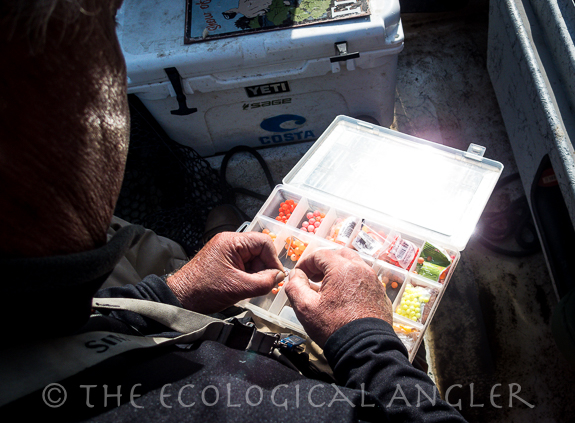
And Jim Freeman offers one final disclaimer: A very rainy year, or a very dry one, can knock any timetable into a cocked hat when it comes to fishing any steelhead stream. The Klamath is no different.
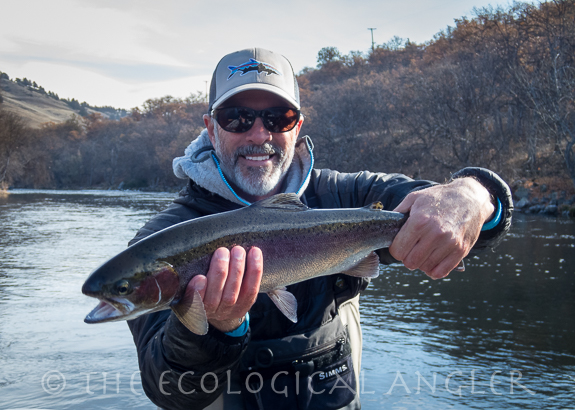
Continued Hatchery Operation
With four dams scheduled to be taken down on the Klamath River in 2021, the continued operation of the Iron Gate Hatchery has come into question. Based on the goal of mitigating the loss of almost 20 miles of spawning and rearing habitat by the construction of Iron Gate Dam, the California Department of Fish and Game put Iron Gate Hatchery into operation. The hatchery supplements wild runs of spring and fall-run Chinook, coho, and steelhead. PacificCorp (the owner & operator of the four dams) pays for the operation of Iron Gate Hatchery, and will continue funding the hatchery for 8 eight years after the dams come down.
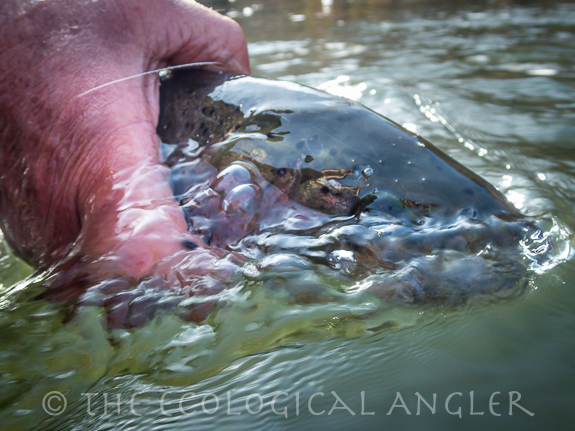
With the recovery of the twenty miles of upstream habitat, does the original mission of Iron Gate Hatchery make sense after 2021? As research mounts showing hatchery raised fish having negative impacts on their wild counterparts, a growing chorus of voices are questioning the decision to let Iron Gate Hatchery run after the dams come down. According to one leading researcher even with two hatcheries operating in the Klamath River basin for over half a century, we can prevent the homogenization of wild and hatchery salmonids in the Klamath. One recommendation - closure of Iron Gate Hatchery for 10 years, with monitoring of both wild and hatchery fish populations. The cycle of hatchery operations can be broken for a short period, and the necessary data collected. I think the declining wild salmon and steelhead would welcome the break. And similar to most creatures, they would quickly take advantage of the opportunity to expand.
